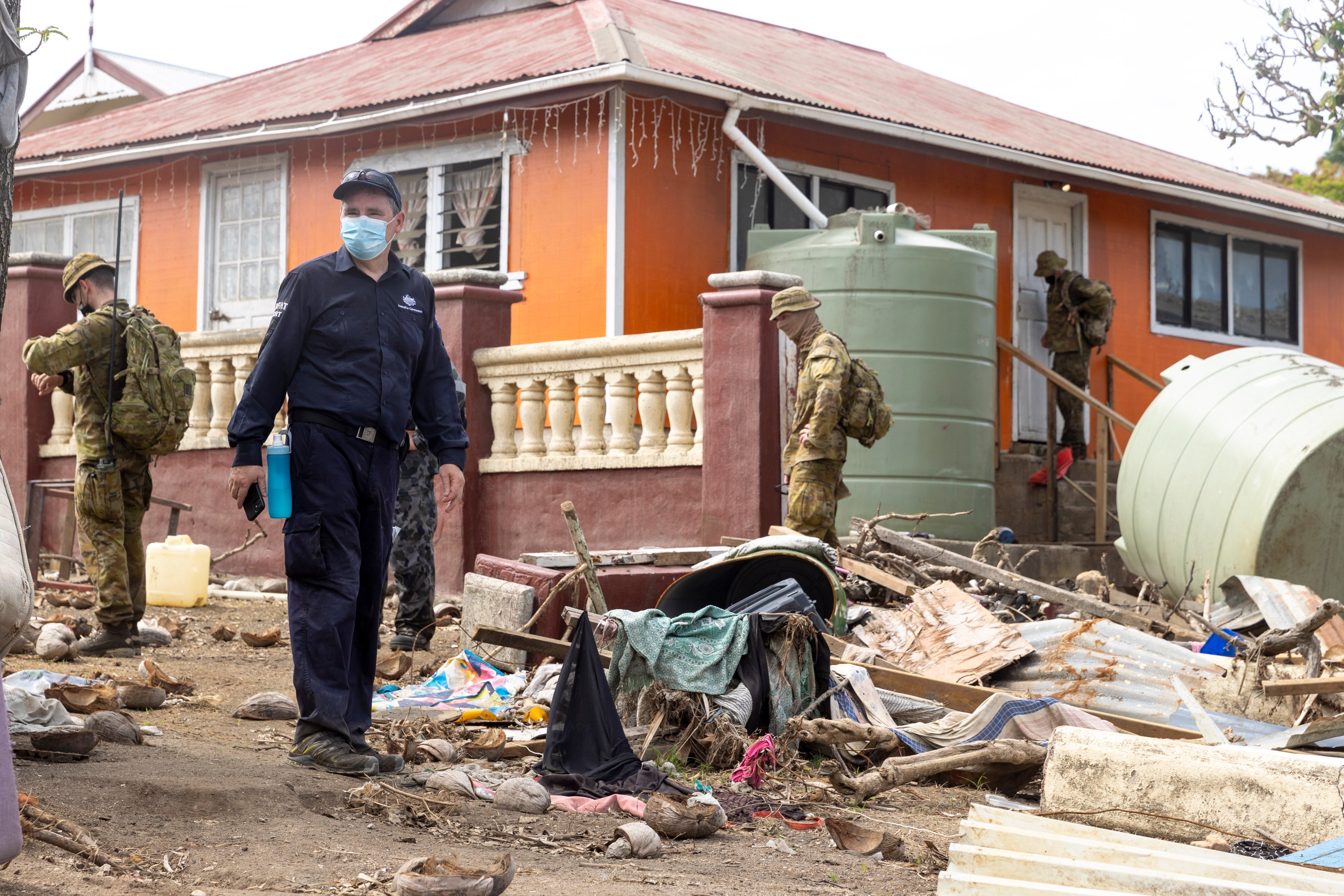Tonga needs over $90 million to start repairs from volcano
A U.N. official says 80% of Tonga's 105,000 people were affected by the undersea volcanic eruption and ensuring tsunami that lashed the Pacific island nation on Jan. 15

Your support helps us to tell the story
From reproductive rights to climate change to Big Tech, The Independent is on the ground when the story is developing. Whether it's investigating the financials of Elon Musk's pro-Trump PAC or producing our latest documentary, 'The A Word', which shines a light on the American women fighting for reproductive rights, we know how important it is to parse out the facts from the messaging.
At such a critical moment in US history, we need reporters on the ground. Your donation allows us to keep sending journalists to speak to both sides of the story.
The Independent is trusted by Americans across the entire political spectrum. And unlike many other quality news outlets, we choose not to lock Americans out of our reporting and analysis with paywalls. We believe quality journalism should be available to everyone, paid for by those who can afford it.
Your support makes all the difference.A month after an undersea volcanic eruption and ensuing tsunami lashed Tonga, a U.N. official said Wednesday that 80% of the Pacific island nation’s 105,000 people were affected and the country needs over $90 million to start repairing damage and restoring its key farming and fishing sectors.
Sanaka Samarasinha, the U.N. resident coordinator for Tonga, said during a virtual news conference from neighboring Fiji that “the anxiety hasn’t gone away with the receding waters of the tsunami.”
Cyclone season is still in full swing, and there are almost weekly earthquakes in the region, the latest a magnitude 5.0 quake only a few hours earlier just 47 kilometers (30 miles) from the capital, Nuku’alofa, Samarasinha said. He said no damage had been reported.
The Jan. 15 eruption left a thick layer of volcanic ash blanketing Tonga’s main island, tainting much of its drinking water. Several small settlements on outlying islands were wiped out, and the tsunami severed the sole fiberoptic cable that connects Tonga to the rest of the world. Four people died.
Samarasinha said 14 U.N. agencies and the international community are supporting Tonga’s relief and recovery efforts, providing almost 40 tons of water and sanitation supplies, reconnecting Tonga with the rest of the world through emergency telecommunications services and logistics, and providing food, school materials and psychological support.
The U.N. also plans to provide cash to 5,000 of Tonga’s most affected people, including 2,000 who are still displaced from their homes and others who lost their livelihoods, he said.
Tonga had been COVID-19 free for almost two years but the volcano’s aftermath brought the coronavirus to the island, when two Tongan dockworkers tested positive. Samarsinha said the country is in lockdown until Feb. 20, and because of its high vaccination rate -- 89% with double doses -- those infected have displayed mild symptoms.
The World Bank estimates $90.4 million in losses, which represents 18.5% of Tonga’s GDP, he said.
More than 80% of the country’s people depends on small scale agriculture and fisheries and livestock just for consumption, Samarsinha said. The World Bank estimated losses to agriculture, forestry and fisheries at $20.9 million.
There were also multimillion-dollar losses to homes, schools, churches, community halls and other non-residential buildings, and infrastructure including roads, bridges and the ruptured undersea cable, he said.
He said approximately $30 million has either come in or is about to come in for relief assistance, and some will be used for early recovery programs.
Samarsinha stressed that the $90.4 million in estimated losses doesn’t take into account future losses from tourism, agriculture or commerce.
“We know that much of the infrastructure that was destroyed or damaged beyond the homes of people was the tourism infrastructure,” he said.
“We must support the government’s efforts to quickly prepare and implement a comprehensive recovery plan, one that takes into account the economy and infrastructure as detailed in the World Bank report, but also focuses on those who are most are most affected,” Samarasinha said.